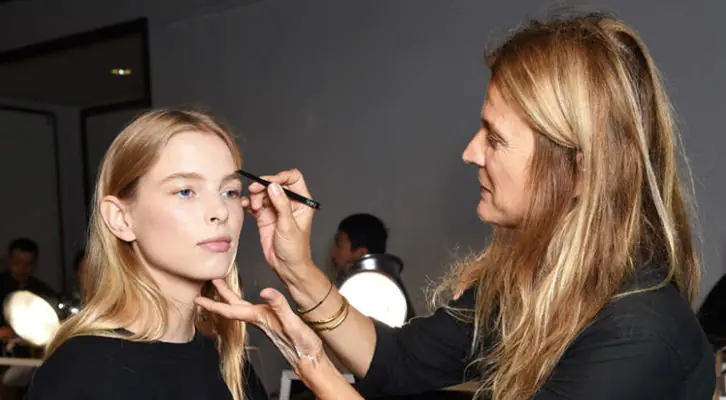
As you know, you don't have to be a professional makeup artist to apply makeup with professional precision. It’s enough to know the secrets that every second master of brushes and palettes uses. Luckily, makeup artists are people who are happy to share life hacks and new techniques that can bring harmony to your relationship with your makeup bag. We have collected the ten most popular tricks that will pleasantly surprise you.
Transparent powder
Transparent powder without tint is not only an excellent makeup fixer, but also a multi-functional dry texture. Monica Blunder, makeup artist for Jessica Alba and Amanda Seyfried, admits to using it as dry shampoo or powdering her lashes between two coats of mascara to make them look fuller.
Lip balm
You may not have realized it until now, but your favorite balm is more than just a moisturizer. Take a cue from makeup artist Daniel Martin and use it as a highlighter with a natural glow. In addition, a balm without a tint can turn any dry blush into a creamy one, which is especially important in winter.
Moisturizing cream
To give your skin a natural, subtle glow, use every makeup artist's favorite trick: simply add moisturizer to your product. This works with foundation, concealer, eye shadow and blush. But do not forget that moisturizer will definitely “dilute” the shade, making it less pigmented.
Eyeshadow
This trick was actively used by makeup artists at New York Fashion Week: to add a velvety texture to your lips, put a little blush or warm shade on your finger and apply it over your regular lipstick. Easier than using long-lasting matte lipstick that dries out instantly. Plus, much more interesting.
Facial mist
Although fashion show makeup artists are quite confident that matte makeup will very soon become an undisputed trend, wet makeup and strobing are still at the peak of popularity. The problem is that glowing skin treacherously highlights pimples and flaking, which prevents you from achieving the perfect result. Here's a tip - use a mist spray for your face. Spray it on your skin after applying foundation and concealer - this will help smooth out imperfections.
Base oil
Cold weather is the number one enemy of dry skin. Even those of us who constantly struggle with dryness and flaking face problems during the winter. Makeup artist Edward Cruz says that in such cases, he uses a base oil and a BeautyBlender, which makes applying oil to problem areas much easier.
Bronzer
A tanning product may not seem like the most obvious candidate for the title of "best dual-action product," but makeup artists are willing to give it a chance. Cariss Ferreri, for example, notes that if you use bronzer as eyeshadow, you will get the perfect nude smoky eyes.
Red lipstick
Rita Ora always looks flawless, so you can take her makeup artist Katie Jeng's word for it. If you don't have a peach concealer to cover up dark circles under your eyes, Jeng recommends reaching for... carrot lipstick. Mix it with your regular concealer to get the desired shade. Sounds weird? Oh yeah. Are we ready to try? Undoubtedly!
Eyebrow wax
Lip care is taking on completely new forms. Makeup artists often use eyebrow wax in a pencil for moisturizing - of course, colorless. It nourishes your lips perfectly and works as well as a primer if you want to apply a bright shade.
False eyelashes
If you love big, voluminous lashes a la Brigitte Bardot, getting the casual look can be very difficult. Ariana Grande's makeup artist Daniel Chinchilla says that in this case, it is better to use two pairs of light and thin false eyelashes, which will surprise you unexpectedly. The only rule is that they should be as natural as possible.
About multifunctional oils and products based on them
Contrary to popular belief, oils not only moisturize and nourish, but also help reduce sebum secretion, have an antiseptic effect and can be used as a base for makeup. Fatty acids contained in natural oils help maintain skin balance and absorb moisture.
“Apricot, sesame, soybean and avocado oil are suitable for dry skin, rapeseed, almond, mustard, corn oil are suitable for oily skin, and sunflower, coconut, olive, almond, jojoba oil are suitable for combination skin,” says Margarita Kostenko, dermatologist, cosmetologist , obstetrician-gynecologist at Star Beauty Moscow and Rocket Clinic clinics.
Use of oils in day and night care
More and more brands are producing oils that replace creams or serums. They often perform more functions and create the glow skin effect that makeup artists love so much at shows. Chanel and Guerlain were among the latest to release oils for daytime skin care. Both products restore the skin and have a lifting effect. Oils can be used alone or added to cream, serum or foundation. Other anti-aging and antioxidant oils include options from L'Occitane and Clinique.
“For most people, after thirty years, wrinkles seem deeper, as the production of sebum decreases, the protective film is broken and the skin begins to suffer from dryness. Most creams contain oils, but they are not enough to retain moisture. Pure oils are lipophilic, that is, they pass through the lipid layer of the skin faster, preventing moisture loss and thickening the skin, explains Marianna Nikitina, training manager at L’Occitane. “If you apply the oil before an anti-aging cream, its effect will be stronger, so the active ingredients will penetrate faster.”

There are also mono-oils or a complex of oils to solve various skin problems. For example, soothing aromatic essence from Decleor, softening oil from Methode Cholley or almond oil from Weleda - all three are created for sensitive skin and are indicated for rosacea, inflammation and redness. “I love tea tree oil for its impressive antiseptic properties. It can cure a large pimple overnight, and in smaller cases it works flawlessly. I use it at work and for myself, applying it precisely to active inflammation. I can add a couple of drops to my moisturizer and give it a light massage, it's very refreshing. This oil is quickly absorbed, does not leave behind a film and does not interfere with makeup,” advises Marina Kolosova, makeup artist and teacher at Chilly Dash studio.
Night oils are designed to remove toxins, smooth out skin texture and improve complexion, so they often contain antioxidant oils from goji berries, wheat or grape seed.
Skin cleansing oils
In the case of cleansing oily skin with blackheads, it is best to use oils, because this type of skin is highly susceptible to dehydration, and blackheads are an accumulation of fat with keratinized particles. In addition, cleansing the skin with oils helps retain moisture in the epidermis and prevent the premature appearance of wrinkles. “Avoiding oils can actually make your acne problem worse. A deficiency of oils causes dehydration, which can lead to overproduction of sebum. Without adequate hydration, excess sebum can cause clogged pores and inflammation. When balance is restored, these hyperfunctions of the sebaceous glands are reduced, the skin becomes healthier and cleaner,” says Marianna Nikitina.

Basic oils for cleansing the skin - castor, olive, peach, avocado oil, flaxseed. This is the base to which you can add any others you wish. “The resulting mixture is applied to a steamed, dry face. A light massage is done - five minutes is enough. Then you need to cover your face with a damp hot towel, hold it for a while and rub the skin with it, recommends Margarita Kostenko. — To cleanse oily skin, it is best to use essential oils that have a powerful drying, tightening pores, antiseptic, antimicrobial and sebaceous gland regulating effect, for example, tea tree, cypress, juniper, sage, chamomile, patchouli, lemon, ginger. To cleanse dry skin, esters rich in nourishing, moisturizing, regenerating, toning and lifting properties are suitable, for example, immortelle, neroli, rose, oregano, mimosa, frankincense, geranium, lavender, and carrot seed essential oil.”
I want to cover such a simple topic as the correct application of foundation, or rather, preparing the skin for makeup. I set out to study this issue after reading numerous negative reviews on the Internet about various foundations, fluids, creams and other foundations. And I came to a simple conclusion: no, girls, it’s not the products that are bad, it’s your knowledge that’s lame. Knowledge about preparing the skin for applying foundation. Because even the best, most expensive, very luxurious and super innovative foundation simply will not lie on the skin if it is not prepared first. And the worse the condition of the face, the more preparatory work needs to be done. These are the realities.
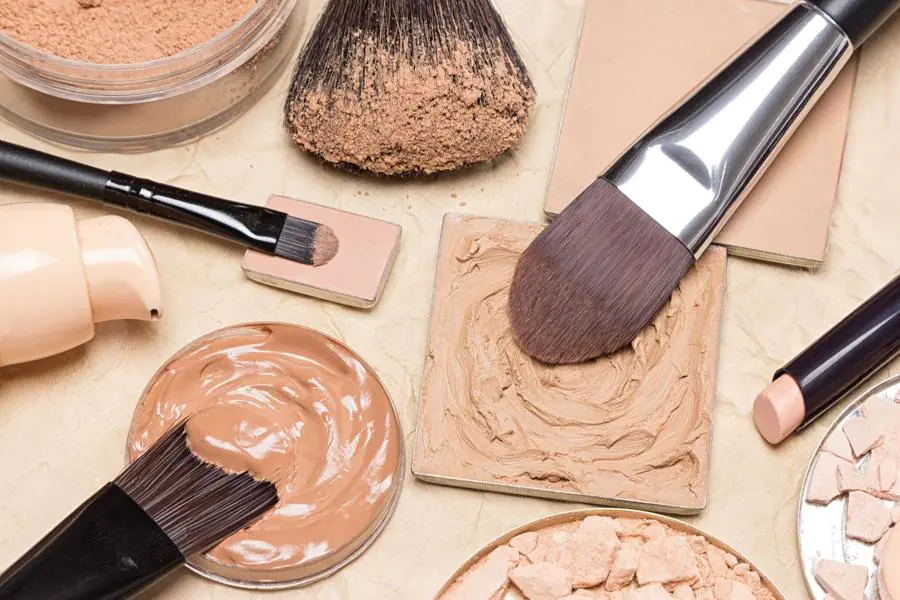
This article will not talk about finding and choosing the ideal foundation. We assume that you already have a suitable bottle. The question is what to do next with this bottle. And I will not touch on the aspects of masking the imperfections of very problematic skin; we will talk about the “average” face. So here's the step by step process.
The most important stage: cleansing, moisturizing
What are these negative reviews about foundations that are most often found on the Internet? I'm sure you've read them more than once too. This is a criticism like: “Emphasizes dry skin, flaking, does not hide redness. The conclusion is a very bad tone.” Such statements just make me sick. And if such comments are still found on the Internet, it means that not enough explanatory work has been done about what to do before applying foundation.
Just keep in mind: any foundation hides no more than 30% of skin imperfections. There are denser, heavier products - they can “photoshop” up to 70% of imperfections, but they are not recommended for every day. Therefore, our direct task is to remove as many imperfections as possible before applying foundation. And for this, the skin should:
- Clear.
- Moisturize.
- Conceal with additional means, if necessary.
Exactly in this sequence. Main - Before applying foundation, get rid of any redness, peeling, dryness, etc. as much as possible. Think of your face as a canvas. What artist would paint on an uneven canvas?
What means to use is up to you. What suits you, what you are used to. Just keep in mind a few tips:
1. If you use micellar water for cleansing, do not forget to rinse it off. The micellar should always be washed off - this colorless water creates a disgusting sticky feeling on the skin. And this is a solvent. It dissolves not only dirt on the skin, but also all the products that you will apply next.
2. Tonic must be alcohol-free.
3. Allow at least 10 minutes to absorb any moisturizer before applying the next layer. We used cream, serum, oil - wait 10 minutes. If you see that the product is not completely absorbed, blot it.
Facial oil before applying foundation
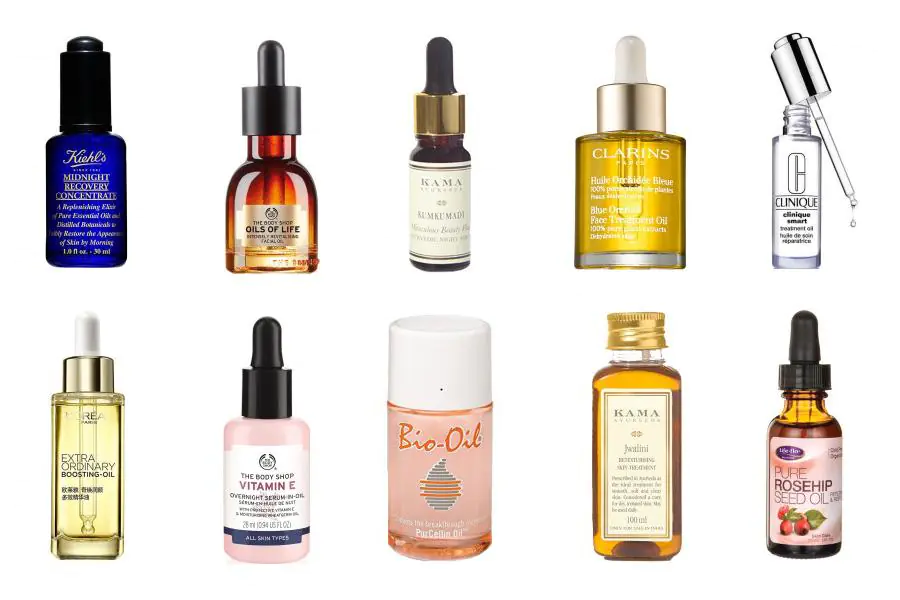
Can oil be used when applying foundation? How? For what? Which? In what order? What is the final effect? There are many legends and conflicting opinions surrounding this issue, let’s figure it out. I will highlight this aspect separately, because on the one hand, oil is one of the stages of preparing the skin for makeup, and on the other hand, it is a means for applying makeup. Let's consider all methods of application.
1. Mix oil with foundation
- Option 1: drop a little foundation onto your hand, add a couple of drops of facial oil, mix and apply the mixture to the skin as usual.
- Option 2: Apply foundation or concealer to the face with strokes, drop a couple of drops of oil onto a damp cosmetic sponge, and blend.
What is the benefit of adding oil to tone?
- If you want to lighten, dilute the matte finish of the foundation, make the coating lighter, more radiant, more natural.
- If you want easier application, distribution, shading of the foundation.
My opinion on this matter. I haven’t tried it, and I’m not going to try it. It is better to choose a foundation that is comfortable, suitable in color and consistency, than to dance with tambourines around an unsuitable one.
2. Apply oil before makeup
Together with the rest of your skincare cosmetics: cream, mask, serum, toner, you don’t have to apply everything on yourself at once. The main thing is to achieve the main goal: remove peeling, redness, nourish the skin, moisturize. If one product is enough for this, great, if more is needed, ok.
My opinion on this matter. Oil as a preliminary part of care is the most reasonable option, if you take into account two important conditions:
- The oil is chosen that is suitable specifically for your skin type, and this is not an easy task. Wide variety, hundreds of varieties of pure mono-oils, regardless of manufacturer. But there are also ready-made mixtures from different brands. With such a choice, it’s easy to get confused. If you have found “your” oil, I can only congratulate you. Personally, I haven't found it yet.
How to determine that a particular oil is right for you? The criterion is extremely simple: it is comfortable to live with, you rub a couple of drops into the skin and they are absorbed without a trace, leaving behind only a feeling of softness and moisture. If this consistency creates a film on the face, an oily sheen, a feeling of stickiness and disgust, then there is no need to use such a product anymore. Guided by this rule, you should choose all other skincare products. And it would be a mistake to think that face oil is only for very dry skin to remove dryness and flaking. A suitable bottle can be selected for absolutely any skin type and for any defect. - Even with the perfect oil, it takes time to absorb; allow at least 10 minutes for this process and only then apply the next product.
3. Use oil instead of highlighter
Kind of a life hack. The finishing touches to the finished makeup. If you want to replace your usual highlighter, rub one drop of (appropriate!) oil between your fingers and apply it to the desired areas on top of the foundation.
My opinion on this matter. Personally, the shine of the foundation is enough for me, I don’t need more.
Final elimination of defects
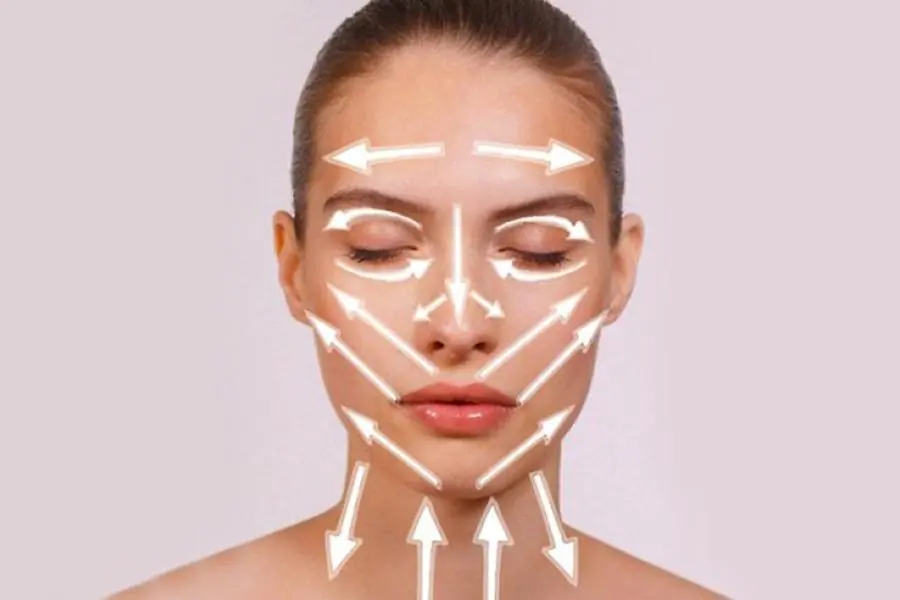
Have you completed all the preparatory procedures? Let's see what happened. Is your skin smooth, nourished, even? You did a great job - now you can pick up a tube of foundation. No? Or is there any doubt that all this beauty will last long? It’s sad, of course, but everything can be fixed. The next stage is the “foundation”.
If there is a suspicion that this area will soon become shiny, dryness will appear here again, there are too many blackheads here, there is a pigment spot here, and here the acne has not gone away. means “we are building the foundation.” It's time to get down to business makeup base. Or the base. Or color correctors - the name may be different, but the purpose of the product is the same - to disguise imperfections before applying foundation. I will not give recommendations on which bases to select, because recommending brands in this case is a thankless task. I will only say that the basics can be found for any shortcoming.
You also need to take into account that CC and BB creams are also considered bases, but they are self-sufficient, after which you do not need to apply foundation. And if you are lucky and don’t need to mask anything, then a regular transparent silicone base without effects will increase the durability of your makeup. If the day promises to be long, then with a colorless “classic” base the foundation will last longer, and there will be no need to refresh the tone.
Applying foundation: tools
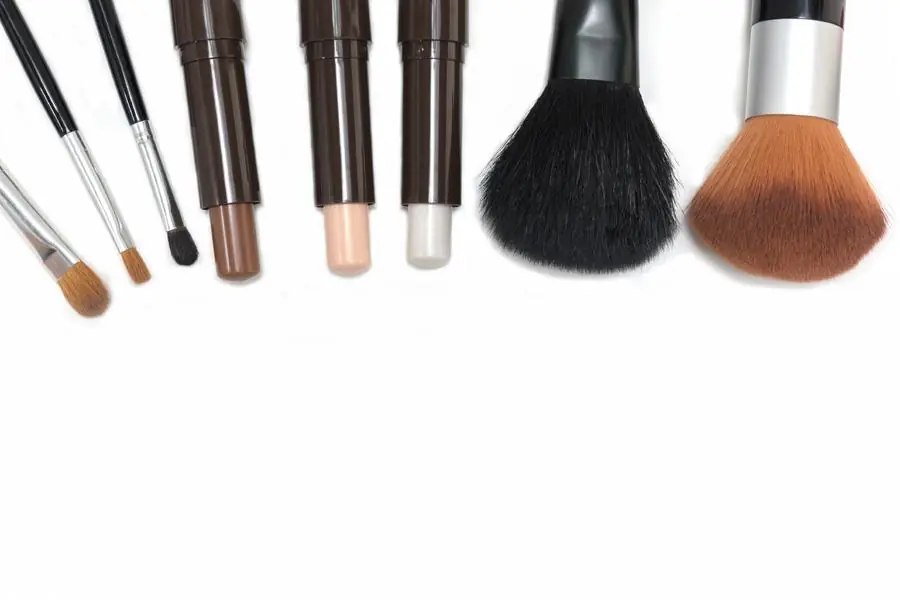
We have carefully and conscientiously prepared for tinting, now let's figure out what tools to use. The choice is small: synthetic brushes, sponges and your own fingers. Everyone chooses for themselves which tool to “draw” with, let’s take into account only a few nuances and recommendations:
1. Makeup brushes – the most expensive and difficult tool to choose. If you have found a comfortable and high-quality brush, rejoice. These accessories are especially useful if you have long nails and applying makeup to your face with your fingers is difficult. What you definitely shouldn’t do is buy all sorts of fakes and low-quality stampings at flea markets like “Everything for one dollar”, Fix price and “stores with products of the Chinese industry that smell dubiously”.
2. Sponges. There are not many requirements for them. The sponge should be soft, conveniently shaped, and quickly return to shape after compression. The sponge is especially useful for the following manipulations:
- Blending concealer under the eyes. The soft structure of the sponge will make this process as accurate as possible and ensure uniform coverage.
- Remove excess foundation. Wet the sponge, squeeze it out and walk over the face with patting movements. At the same time, refresh your tone.
3. Fingers. The most effective “tool”, by the way. Apply any products to the face using pads, stroking and tapping movements. Do not stretch the skin.
Final stage
A multi-layered “cake” of cosmetics has already formed on the face, and still this is not the end. Brief program: apply concealer under the eyes and make a couple of dotted strokes in those places where “it’s not ok yet.” It is important to remember that concealer is applied after foundation, and not vice versa. You can do without a final spot concealer, but under the eyes - only this product is necessary, because concealers are mainly designed for makeup of the area under the eyes. The shade should be chosen very carefully - to match the color of the skin, or better yet, a tone lighter.
And at the end of the day, some optional but decorating touches: powder, blush, contouring (sculpting), highlighters and bronzers. I will not consider these procedures in detail - because this is already a topic for a separate article, and we wanted to consider the question of what to apply before foundation. And they seem to have considered it.
What conclusions can be drawn? The fewer funds from this list we need, the better. Both for our wallet and for our nerves. Therefore, if there is an opportunity to remove at least something from this list, remove it. In an ideal universe, a girl applies CC cream to her bare face and goes out to decorate the world. When in the mood, her cosmetic chain looks a little more complicated: cleanser, moisturizing cream, foundation, powder. Any means are good if you understand what their role is.



